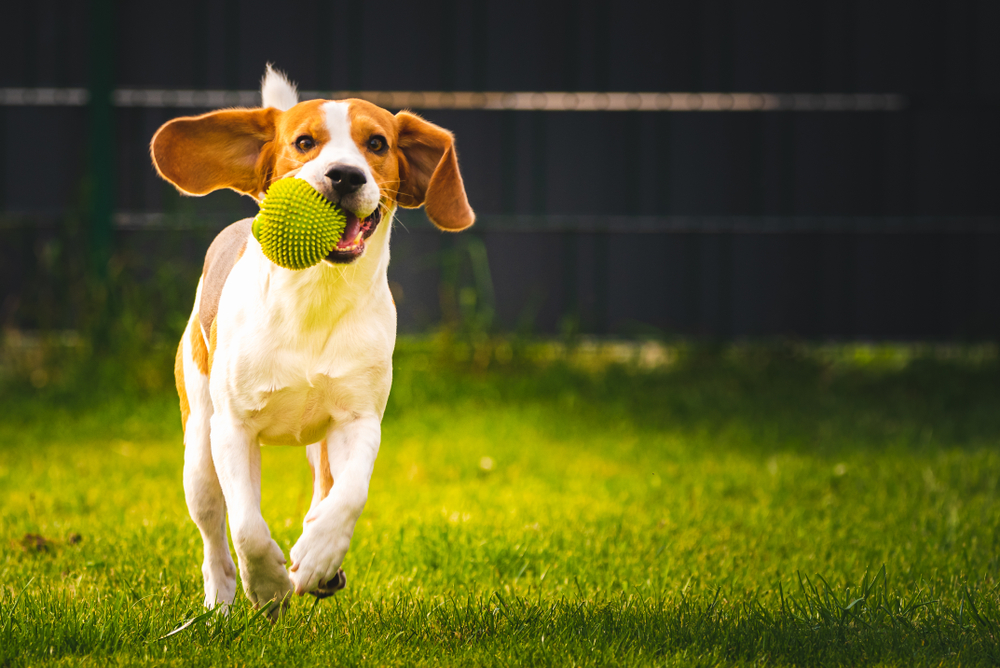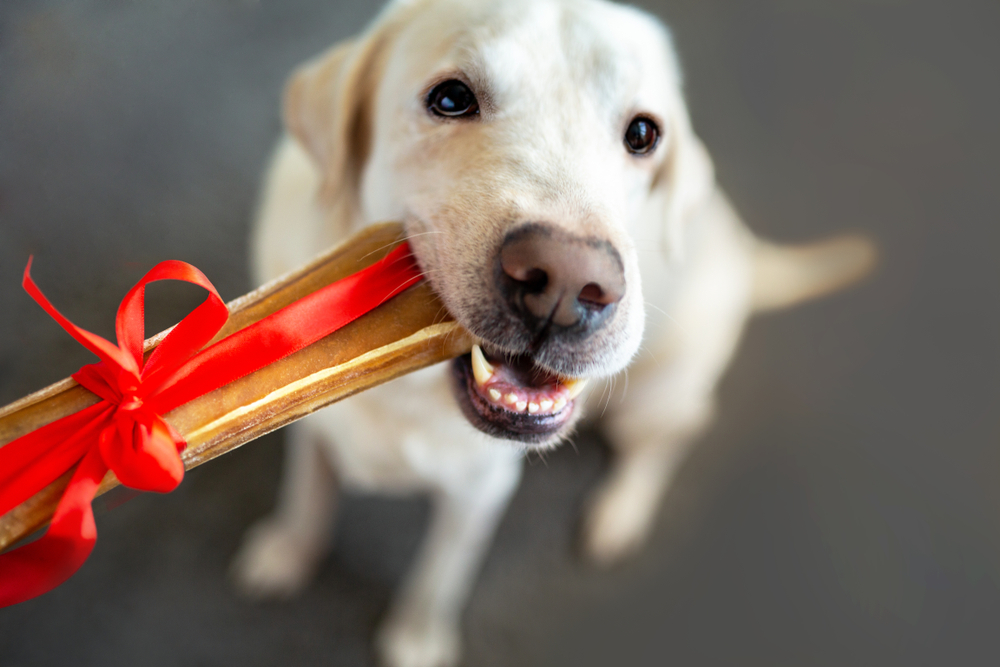Dogs are innate chewers who explore the world with their mouths. Without an appropriate chew toy, your dog’s explorations may lead them to your shoes or furniture. The right chew toy spares your slippers and supports your dog’s mental and physical health, but not all chews are created equal. At Star of Texas Veterinary Hospital, we help you make the best choices for your pet’s health and wellness.
Clients often ask, “What is the best chew toy for my dog?” Our general safety guidelines will help you choose a chew toy for your dog that they will sink their teeth into, and you will feel good about.
Determine your dog’s chewing style
Before selecting a new chew toy for your dog, observe their current chewing style. Decide which of the following categories best describes your dog:
- Gentle chewer — This dog enjoys licking, sucking on, and carrying their toys—usually soft plush ones—without destroying them. Toys tend to last longer for a gentle chewer.
- Average chewer — Most dogs fall into this category. An average chewer may rip apart a plush toy, but usually will not destroy harder chew toys made of materials like nylon or rubber.
- Power chewer — This chewer is—you guessed it—powerful. Plush toys don’t stand a chance against these determined dogs, making durable rubber, nylon, and edible chews the better options.
Evaluate your dog’s chew toys for safety
Have you ever perused the chew toy aisle, stared at the abundance of different shapes, sizes, and flavors—not to mention the vastly different prices—and found yourself overcome with indecision? Or, perhaps you brought your dog with you to select their favorite chew toy and watched, in horror, as they headed straight for the plush toy you knew they would destroy in seconds. We need to help our dogs by selecting a safe chew toy that lasts. Follow these guidelines when choosing your dog’s chew toy:
- Size — Toys that are too small can become lodged in your dog’s mouth or throat, causing choking. Look at the weight chart on the toy’s packaging, to determine the best size for your dog.
- Hardness — Extremely hard chew toys can lead to broken teeth and enamel damage. Evaluate a chew toy’s hardness with these tests:
- Thumbnail test — If you can press your thumbnail into the chew toy’s surface without leaving any indentation, the toy is too hard for your dog, and may break their teeth.
- Bending test — You should be able to bend or break a chew toy with your hands—we are not encouraging you to test this one, but do give the toy a good squeeze, and use your best judgment.
- Knee test — A chew toy that hurts when you hit your knee is too hard for your dog.
- Durability — You want a chew toy to last more than the car ride home—they aren’t cheap, after all—but your dog may chew apart a toy that is too soft or poorly constructed, and choke on small pieces.
- Coating — Edible chew toys with a flavored coating can cause digestive upset. Choose plain, unflavored chew toys.
- Washability — Chew toys get dirty quickly, and should be made of a material that can be cleaned and disinfected.
Avoid dangerous dog chew toys
Every chew toy has potential dangers, but some pose more risks than others. Avoid the following types, to decrease your dog’s injury risk:
- Bones — Bones may seem a durable option for those power chewers, but they are often hard enough to break your dog’s teeth. Sharp, broken bone pieces can pierce your dog’s throat, or become lodged in their esophagus. Whether cooked or raw, bones are too hard for dogs.
- Cow hooves — Like bones, cow hooves can break your dog’s teeth, or splinter into small shards. Their circular shape poses an additional threat, because hooves can get looped around your dog’s lower jaw, behind the canine teeth, and often require removal by a veterinarian.
- Antlers — Antlers’ hardness can cause teeth breakage, and their sharp points can damage your dog’s gums and throat, and make oral puncture wounds.
- Rawhides — These popular chews are made of chemically processed animal hides, and can become contaminated with bacteria that can make you and your dog sick. Large rawhide pieces can get stuck in the digestive tract, and removal sometimes requires abdominal surgery.
Always supervise your dog with toys, to ensure they don’t swallow any small parts. If they do swallow a chew toy part, contact Star of Texas Veterinary Hospital immediately.
Consider safer dog chew toy alternatives

Consult our veterinarians for personal recommendations for your dog, and look for chew toys that pass our safety tests. A few good options include:
- Nylon or rubber chew toys — Look for nylon or rubber chew toys that are firm enough to withstand serious chewing, with enough “give” that they won’t cause tooth damage. Some rubber toys are hollow, allowing you to hide treats inside, or stuff them with peanut butter. Freeze the stuffed toy for a long-lasting, delicious treat for your dog.
- Edible chews — Edible chews tend to be more digestible for your dog, and any product approved by the Veterinary Oral Health Council (VOHC) has been proven to prevent plaque and tartar buildup.
- Balls — A hard rubber ball is great for a game of fetch, as long as your dog cannot chew the ball into pieces. Also, ensure that the ball is the appropriate size for your dog.
We hope our safety guidelines will help you choose your dog’s next chew toy with confidence. Contact our Star of Texas Veterinary Hospital team with any chew toy-related questions, or to schedule your dog’s next dental appointment.






